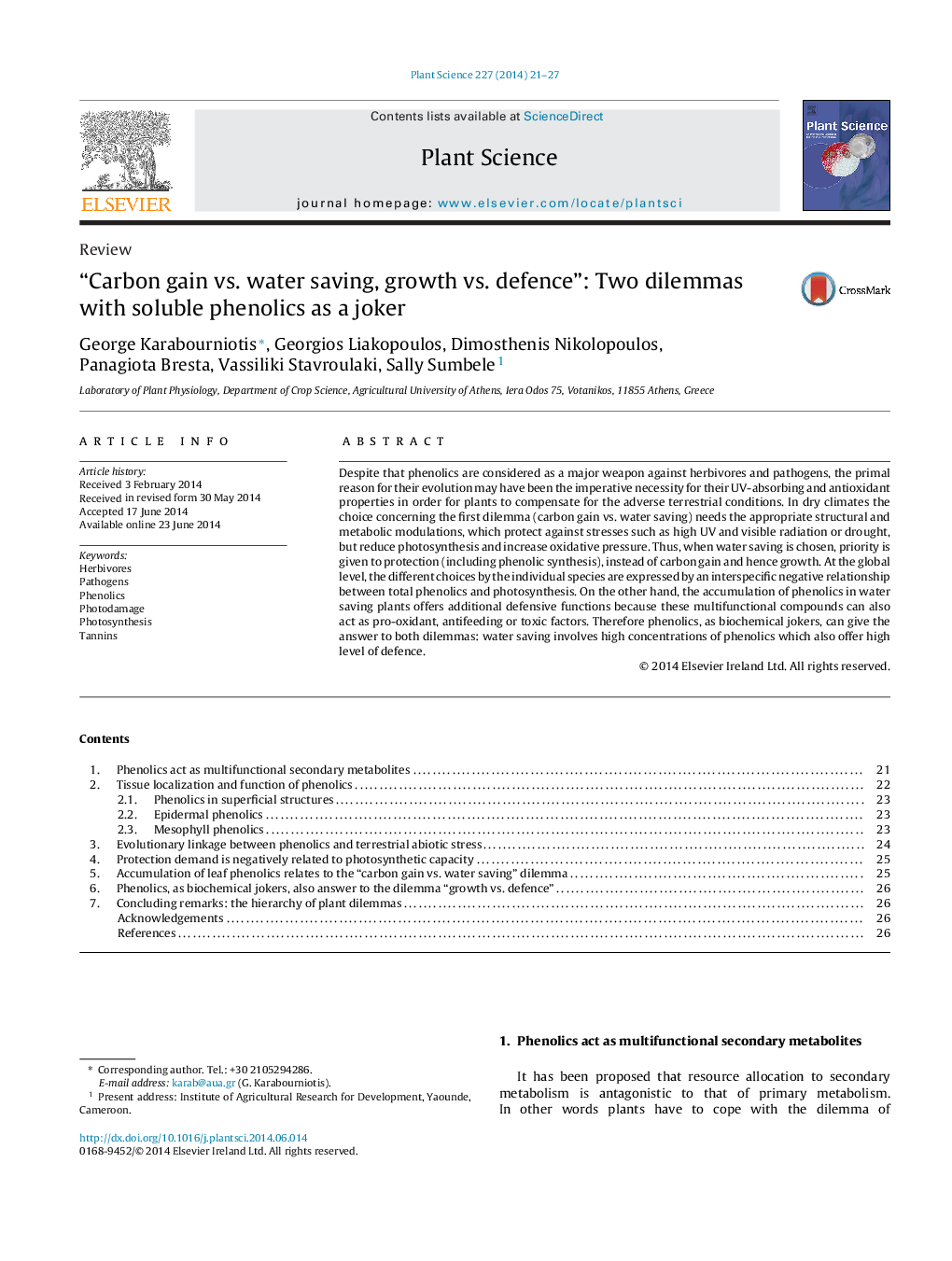| Article ID | Journal | Published Year | Pages | File Type |
|---|---|---|---|---|
| 8358148 | Plant Science | 2014 | 7 Pages |
Abstract
Despite that phenolics are considered as a major weapon against herbivores and pathogens, the primal reason for their evolution may have been the imperative necessity for their UV-absorbing and antioxidant properties in order for plants to compensate for the adverse terrestrial conditions. In dry climates the choice concerning the first dilemma (carbon gain vs. water saving) needs the appropriate structural and metabolic modulations, which protect against stresses such as high UV and visible radiation or drought, but reduce photosynthesis and increase oxidative pressure. Thus, when water saving is chosen, priority is given to protection (including phenolic synthesis), instead of carbon gain and hence growth. At the global level, the different choices by the individual species are expressed by an interspecific negative relationship between total phenolics and photosynthesis. On the other hand, the accumulation of phenolics in water saving plants offers additional defensive functions because these multifunctional compounds can also act as pro-oxidant, antifeeding or toxic factors. Therefore phenolics, as biochemical jokers, can give the answer to both dilemmas: water saving involves high concentrations of phenolics which also offer high level of defence.
Related Topics
Life Sciences
Agricultural and Biological Sciences
Plant Science
Authors
George Karabourniotis, Georgios Liakopoulos, Dimosthenis Nikolopoulos, Panagiota Bresta, Vassiliki Stavroulaki, Sally Sumbele,
